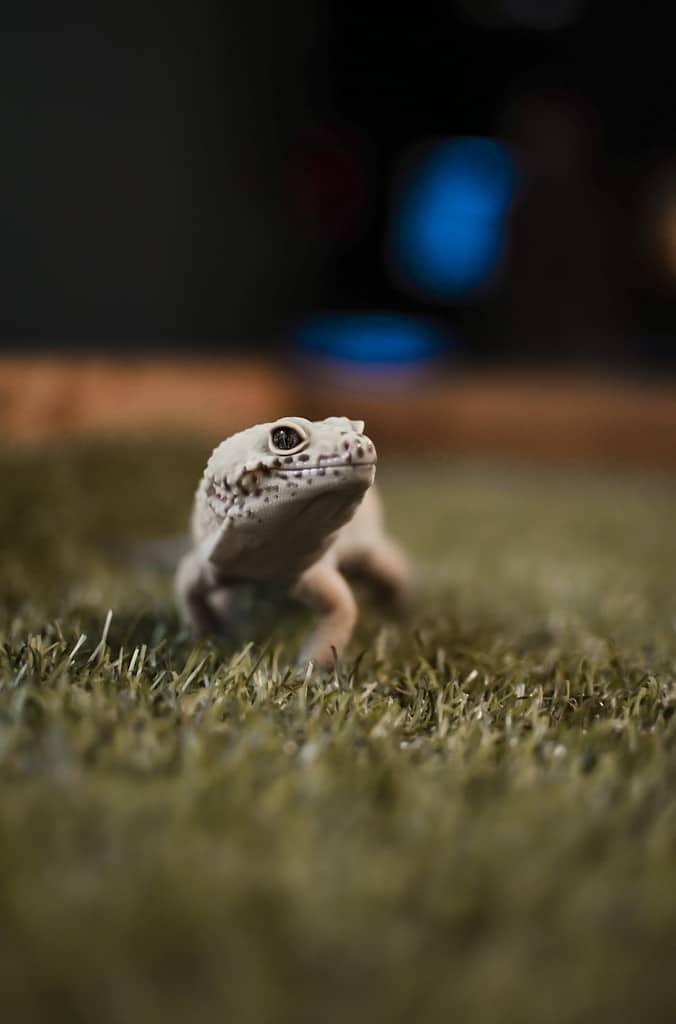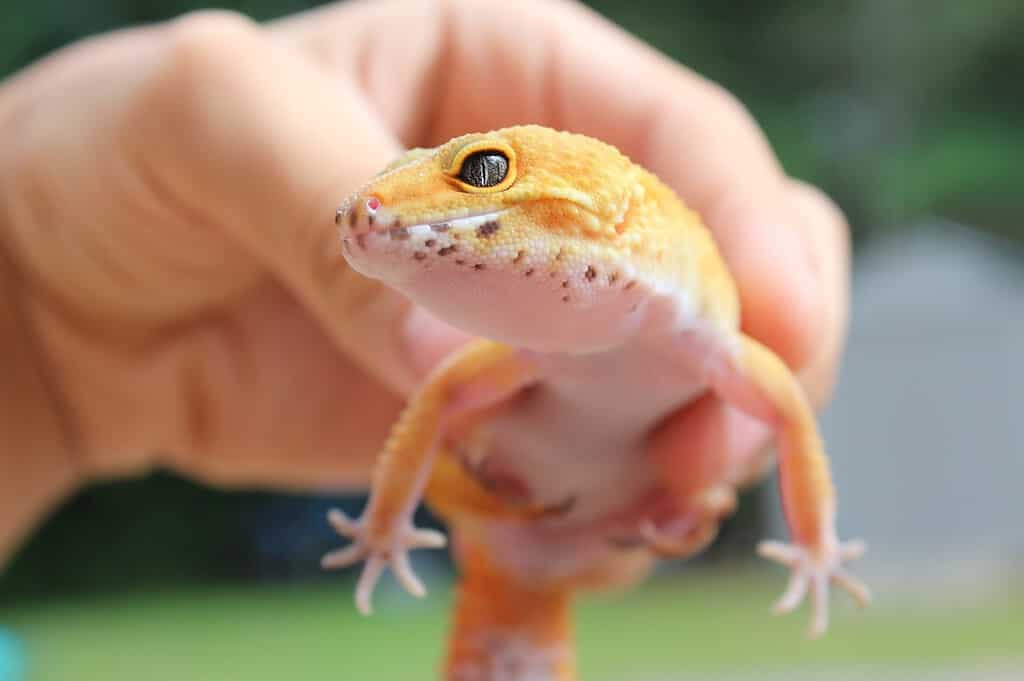Even though it’s normal and healthy for reptiles to shed their skin, it can be scary to see your favorite pet do it. While losing its skin, our Leopard gecko might suffer various health problems, which worries us. In their natural habitat, Leopard geckos shed their skin with little to no difficulty; in captivity, they may have trouble if their care is inadequate.
There are many different reasons why Leos lose their skin. The most important thing is to help them get new skin layers as they get older. Shedding helps remove parasites, acquire adult coloration, conserve nutrients, and repair skin cuts/abrasions. Let’s discuss how often Leopard Geckos sheds and what you can do to assist them.
How Often Do Leopard Geckos Shed?

Juvenile Leos will shed at least once a month, while adult Leos will only do so once every two months.
Your gecko’s age, diet, and environment are the primary factors influencing how frequently and easily it loses its skin. Young species develop faster than older ones and shed more often.
Leopard Gecko Shedding
As a Leo grows, it sheds its old skin layer and changes it with a fresh layer. After separating from the new skin underneath it, the old shed/skin eventually falls off. The old skin is torn off in chunks by Leos.
What Causes Leos To Shed?
There are many different reasons why Leos lose their skin/shed. Helping them grow new skin/epidermis layers as they become older is the most important thing you can do for them. Shedding assists in parasite clearance, mature coloration, nutrition conservation, and wound healing.
They lose their old skin so that they may grow new skin. As their bodies continue to grow, the epidermis of their skin loses its flexibility, making it impossible for them to adapt to the increasing size of their bodies. As a result, they are forced to develop new skin to cover their expanding bodies. As a result, they need to develop new skin. In addition, this is why baby Leopard geckos lose their skin more frequently than adult geckos do.
It can help them in many ways besides giving them new, stronger skin. Geckos continue to shed even after reaching their full adult size, typically after about 18 months of age. This is because the process has several benefits for the gecko. However, there are times when leopard geckos do not shed their skin, such as when they are incubating eggs or while they are feeding their young.
Additionally, natural parasites like mites and midges can be kept away by shedding. This keeps the animal healthy. Shedding can also help heal faster with injuries, scratches, and other small skin issues.
When the new layer of skin is ready, and the older layer has dried off, they will either use their lips or rub against a hard object to remove the shed skin from their body. The new skin will have a bright and colorful appearance.
How Often Do Leopard Geckos Shed?
Young leopard geckos shed their skin twice a month until they turn one. Once mature, they shed every 4-8 weeks.
Age determines how often they shed. Because their skin cannot keep up with the growth of their bones when they are younger, their bones tend to protrude through the skin. Therefore, a different layer of it has to be revealed.
However, as leopard geckos reach the age of one year or more, their skeletons stop developing altogether. Consequently, they are not losing nearly as much hair as they did when they were younger.
Leopard gecko shedding depends on their development rate. This means that Leopard geckos will shed their skin more often when they are young than when they are adults and have stopped growing.
How to Facilitate the Shedding Process of Your Leo?
Here are the best things you can do to ensure your Leo sheds quickly.
Environment
The temperature, the atmosphere, and the humidity must be perfect for healthy shedding. The leopard gecko is a lizard adapted to dry climates and prefers to stay there. Some new Leo parents don’t realize this species needs high humidity to shed.
A 38-43% humidity level is excellent for the shedding process of leopard geckos; however, problems might arise if the humidity is too high or too low. It is imperative that the humidity level not drop below 30% at any point. The preceding skin layer becomes extremely dry when there is a lack of humidity, which makes it far more difficult to rip it off.
Give a Shedding Container
It’s a good idea to offer a shedding container/box or hides to your Leos. The container/box should be adequately moist.
Provide Enough Decorations
It is essential to offer your gecko rough decorations that it may brush against during the shedding process. This might be the edge of a plastic hide, sticks, pebbles, or branches. It could also be anything else. These surfaces must be sufficiently abrasive to remove dead skin, but they shouldn’t be so rough that they injure your gecko.
Check Eating Habits
Not only can you avoid difficulties with shedding with a balanced diet, but it can also help you avoid many other health concerns. They must consume nothing but insects to maintain their health and happiness.
A lack of vitamin A is one of the nutritional causes of abnormal shedding in Leos. So, it is recommended that a supplement having vitamins must be given to Leos in their diet.
Adequate Light
People often say leopard geckos don’t need special light sources because they only come out at night. In the wild, individuals of this species are subjected to sunlight because they are utmost active in the early morning and late evening hours. As pets, they need to be exposed to UVB light. This helps in the process of calcium being converted into vitamin D.
UVB light aids the process of your lizard shedding its skin. In addition, it helps ensure that food is completely digested and prevents deficiencies in vitamin intake.

Are leopard geckos capable of eating their own shed?
People frequently ponder whether or not leopard geckos will consume their shed. They certainly do! Your pet may obtain significant nourishment through sheds; therefore, you should not get rid of them. In most cases, leopard geckos will consume their discarded skin about 5-7 hours after it has been molted. If you locate the skin before the allotted period, you can store it in the refrigerator for up to one week before giving it to your gecko if you do so.
How many years does it take for a Leo to mature into its full size?
Leos gain their maximum size in about a year. The pace of the leopard gecko’s growth depends not only on the environment in which it lives and the food it consumes, but also, more particularly, on whether or not it was fed adequately when it was a baby.
